How to create a java project in eclipse: first click the file option pointed by the arrow and create a new project; then click the src package under the project, right-click SEC, select new and CLASS pointed by the arrow; finally enter the box Enter the class name and check the box pointed by the arrow.

The operating environment of this tutorial: windows7 system, java10&&Eclipse IDE 2020 version, DELL G3 computer. This method is suitable for all brands of computers.
Related free learning recommendations: java basic tutorial
How to create a java project with eclipse:
1. Open the eclipse software , click the file option pointed by the arrow in the menu bar.

#2. Click the new and JAVA PROJECT options pointed by the arrow in the drop-down options of the file option.
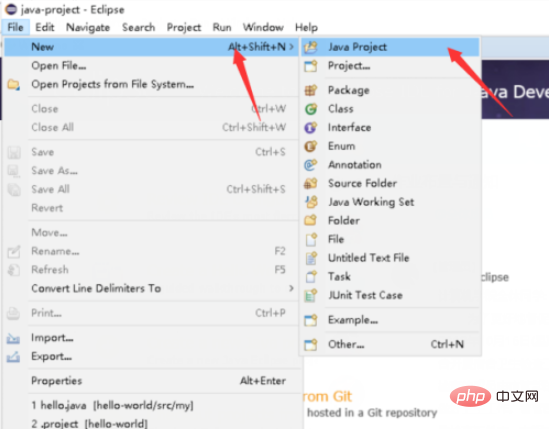
#3. Enter the new project, enter the project name in the enemy pointed by the arrow, and click the finsh pointed by the arrow to complete the creation.
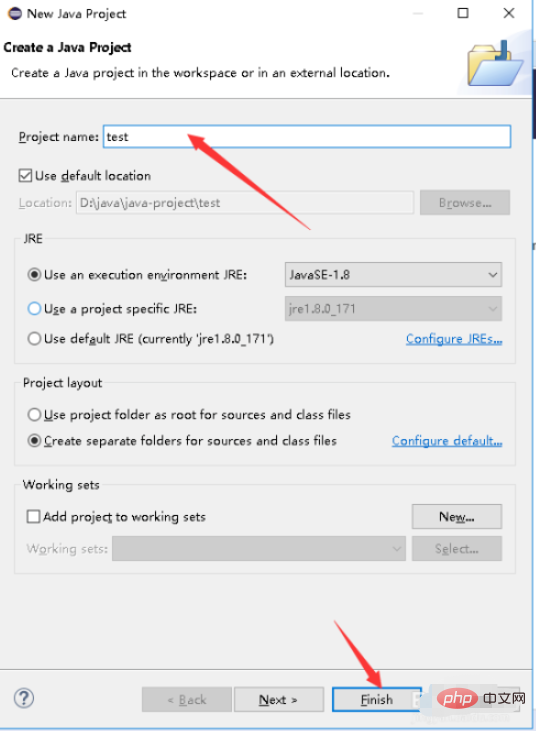
#4. We can see the newly created java project and click on the src package under the project.

5. Right-click SEC, select new and CLASS pointed by the arrow, and enter the new page.
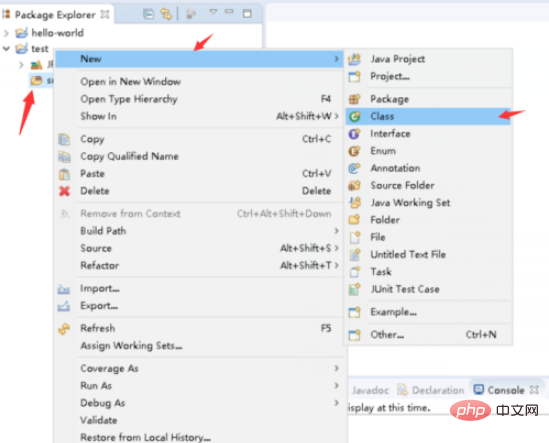
6. Enter the class name in the name input box pointed by the arrow, check the box pointed by the arrow, and click finish
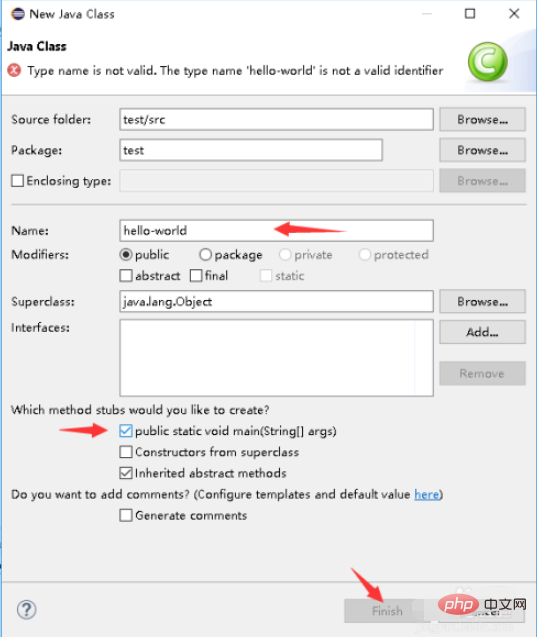
7. We can see that the java file has been created.
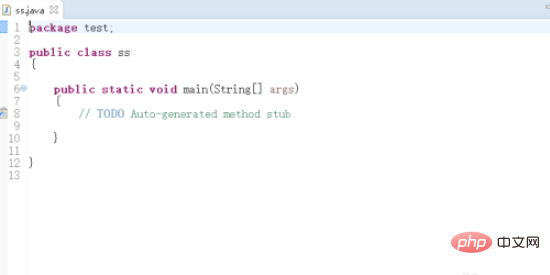
The above is the detailed content of How to create a java project in eclipse. For more information, please follow other related articles on the PHP Chinese website!